
Quality management
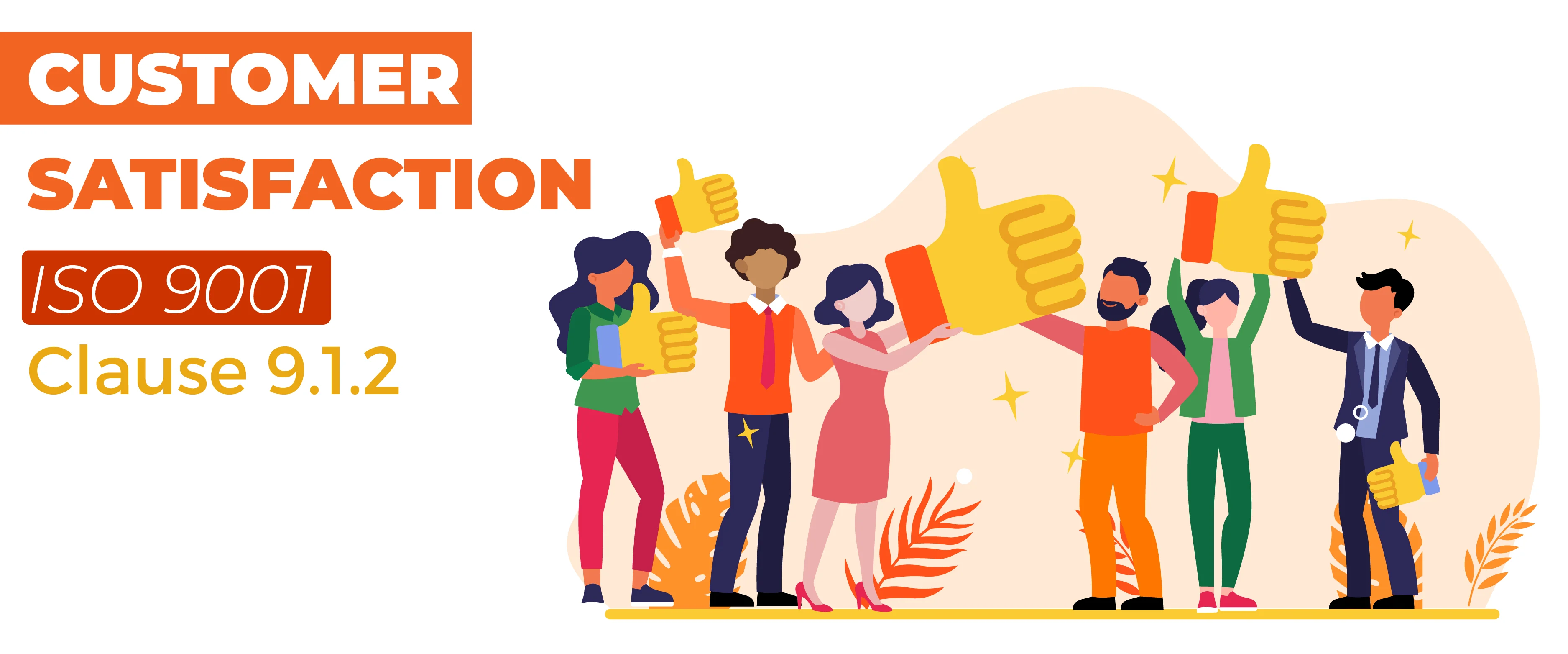
January 24, 2021
ISO 9001 Clause 9.1.2 Customer Satisfaction Explained
ISO 9001 Clause 9.1.2 requires that an organization monitors customer perceptions to determine the degree to which their needs and expectations have been fulfilled. To achieve this, you need to define the methods for obtaining, monitoring and using customer feedback. An organization may develop formal methods like customer surveys or determine the customer perceptions through informal methods like customer meetings, etc. The choice of method may depend on the organization’s size, complexity of work, nature of the customer, etc.
Why is it required?
Customer Satisfaction is used to assess how the customer perceives the products or services that are delivered by your organization. This is an important parameter for business owners to understand customer’s view and bring improvement to their business. Monitoring customer satisfaction helps management make informed decisions related to product and service optimization, sales activities, business expansion, etc. It is important for any organization to understand customer behavior, be abreast with customer’s needs and expectations, realize the influencing factors that will determine customer’s decisions. This will not only help you improve your products and services but also help in gaining a competitive advantage over other companies.
Another important aspect of monitoring customer satisfaction is customer retention. As Dr W Edwards Deming, renowned Quality guru said:
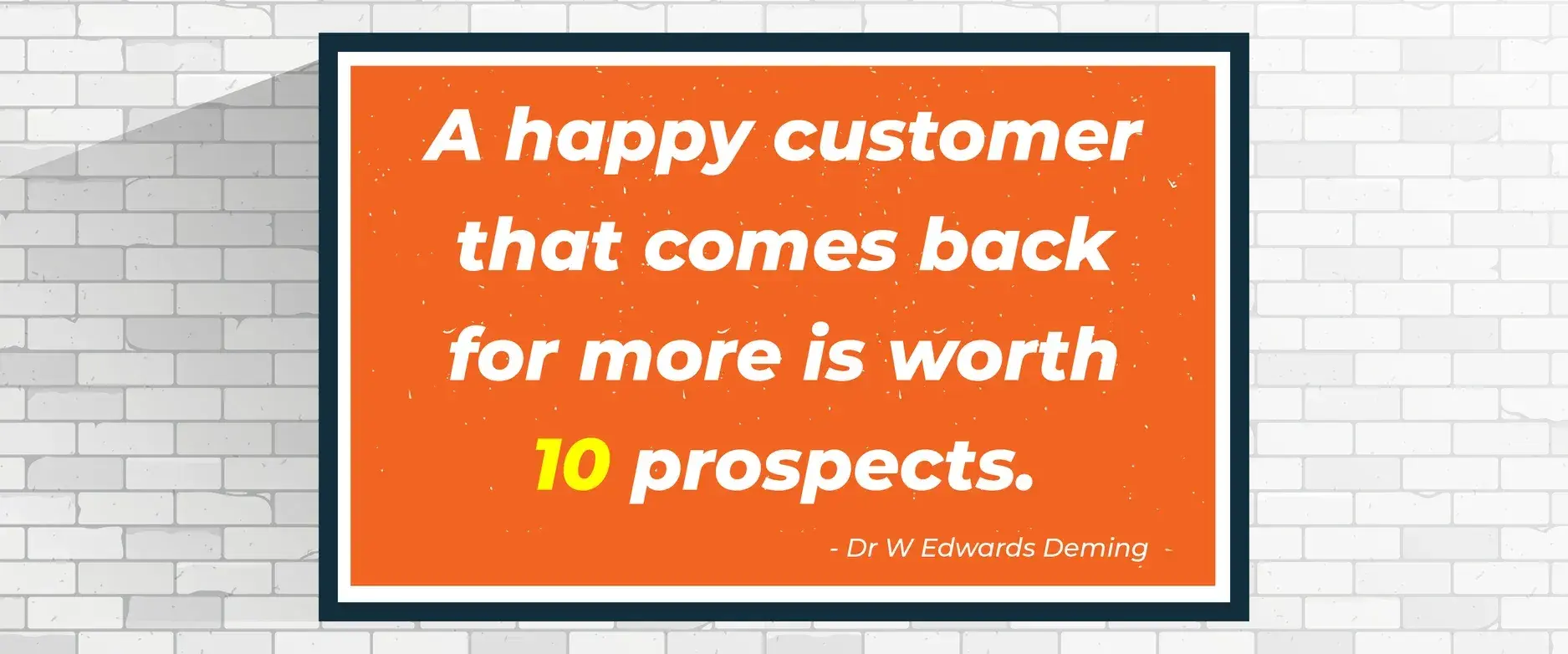
Put simply, acquiring new customers is much more expensive than retaining old customers. Finding new prospects requires an organization to spend money on marketing and sales activities while retaining an old customer is far easier as they already know the business value you offer and are willing to give you more work without any additional effort from your side.
High customer satisfaction increases your brand value and can significantly improve your client base. Word-of-mouth is a powerful method to increase your business and satisfied customers encourage others to use your products and services by giving positive feedback.
Monitoring Customer Satisfaction
Organizations can use several methods to understand customer perceptions; these include but is not limited to:
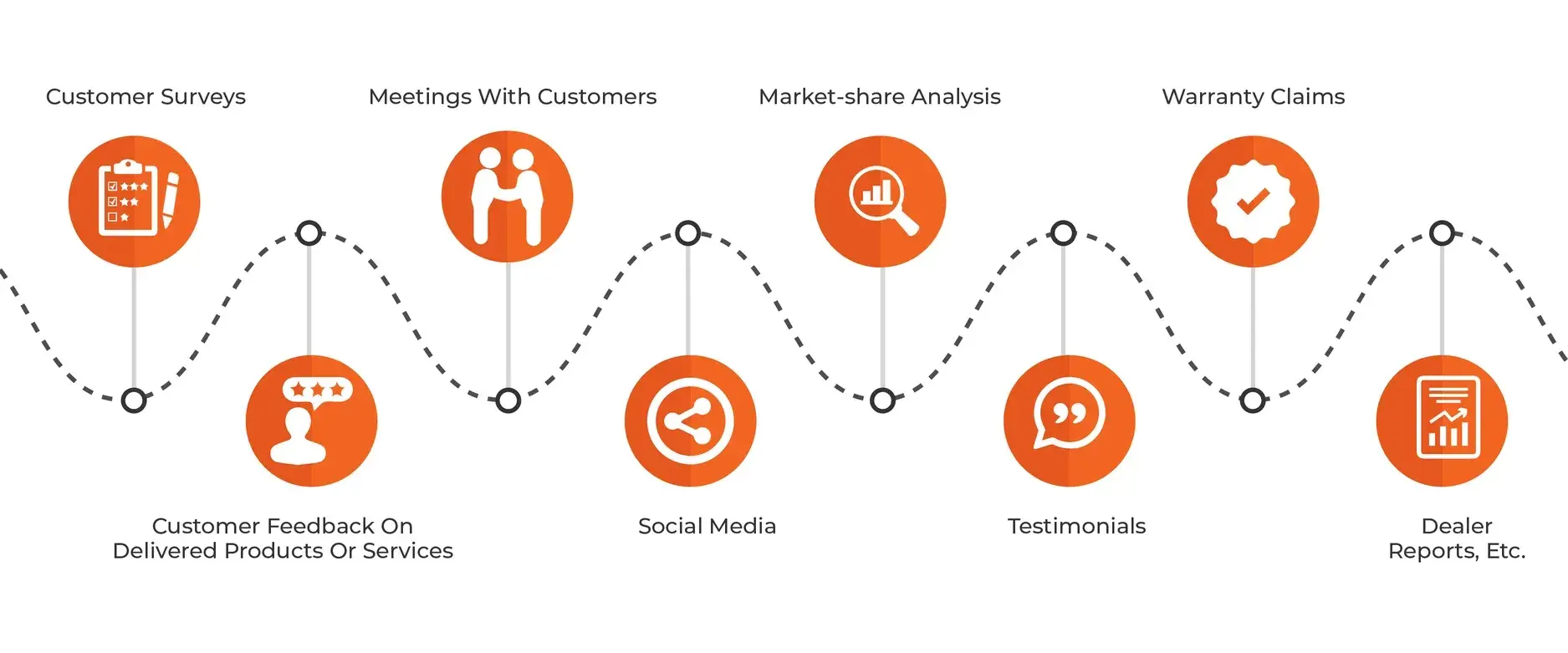
Please note that the customer referred here is not just the end-users of the products, but also intermediate assemblers who integrate your product into theirs and sell in the market and distributors or dealers who market and sell your product.
The right method for your organization for collecting customer feedback data is the one that suits the size and complexity of your organization. It can be a simple phone call to a customer or a formal method of obtaining a customer survey. The intent is to obtain practical feedback from the customer which will help you perceive the customer satisfaction levels and improve your offerings. While selecting the right method for your organization, you should consider factors like availability of resources, number of clients, nature and relationship with clients, etc.
Let's discuss a few of the methods in detail here:
Customer Satisfaction Survey

Customer satisfaction is a formal method of receiving customer satisfaction. The key to getting the right customer feedback is to frame the right question to ask in a survey that will get you the most relevant details. A survey may be formally sent through an application or an email. A post-service survey is also a technique that may be used to get immediate feedback on the product or service you delivered. Post-Service customer feedback shall be short so that customer can respond quickly on these. For a long term relationship, these can be more detailed to get an overall impression that the customer has of your business and how does the customer look at future prospects with your business. The frequency of getting such feedback may also be decided, for example annually or bi-annually.
Customer Surveys have certain limitations. You may receive very little response from the customer but is useful for businesses that have a large client base. A smaller company with a limited customer base may opt for other methods as listed below.

This method of getting customer feedback is good to get a quick response from the customer. This can be a set of questions or an open-ended discussion to understand the level of client satisfaction. The disadvantage of this method is that you may not receive honest feedback and this can also be an expensive affair to call out each customer. Sampling may be used in such cases to ensure optimum feedback is taken periodically.
Social Media
Social media has drastically changed the way businesses operate today and the amount of coverage that social media has, it can be easily leveraged for gathering customer feedback.
This can be done by encouraging reviews on various social media or other e-commerce platforms such as Google reviews, product review and reviews on platforms like Instagram, Facebook, etc. This helps in proactively engaging with the community on forums regarding the business and its products/services, flagging any items that need follow up by the relevant teams/person.
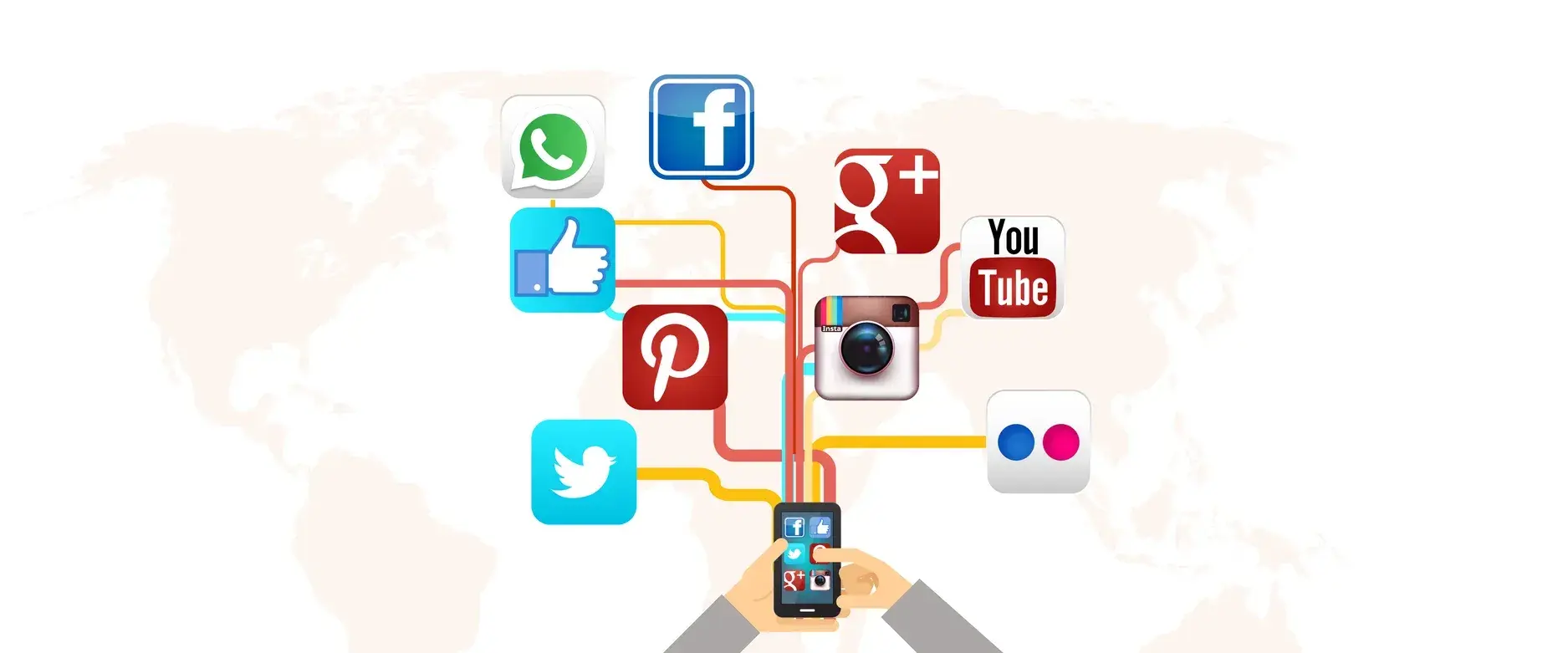
Obtaining Testimonials
Obtaining testimonials is another way of determining customer satisfaction.
For companies providing professional services such as what we do at Compliance Council, it is generally difficult to get online reviews or survey feedback from clients. This could be instead achieved by conducting a project debrief, preparing a case study and obtaining a testimonial verbally which is then written up and sent back to the client for approval. The debrief could be completed by the person not directly completing the project to get honest feedback.
Customer Satisfaction Process
ISO 9001 requires that an organization has a defined method for obtaining customer feedback. To do so, you need to:
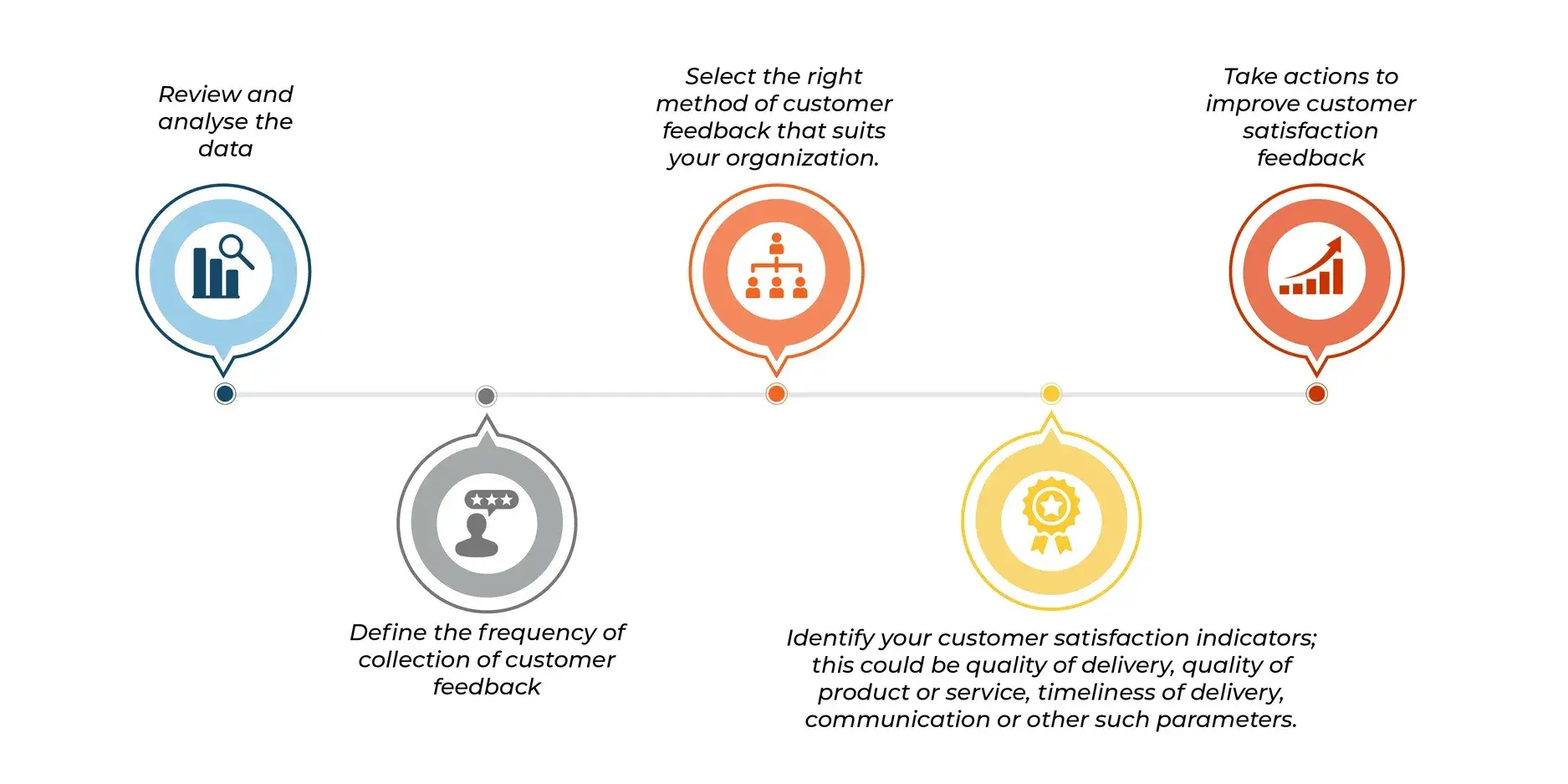
Customer satisfaction indicators can be used to measure the effectiveness of processes. As you take actions on any feedback from the customer, your ratings will start increasing in subsequent feedbacks. So, looking at the trends of improvement in customer feedback ratings or reduction in customer complaints, etc. will give you an insight into how your processes are improving.
By taking timely actions on all negative customer feedback and leveraging the positive feedback to enhance your business, customer satisfaction can become an effective method to ensure that you are continuously improving your processes, products and services.